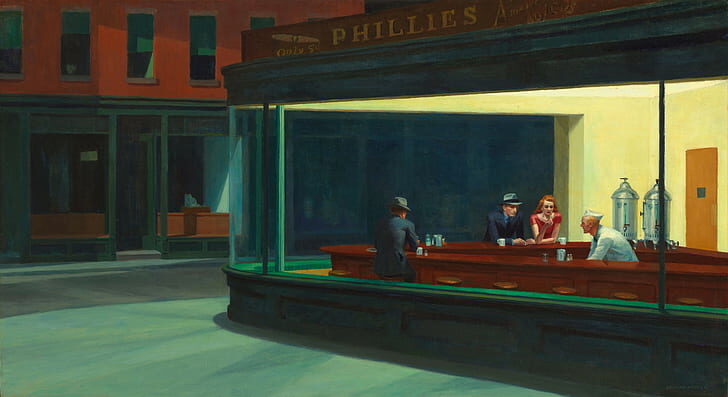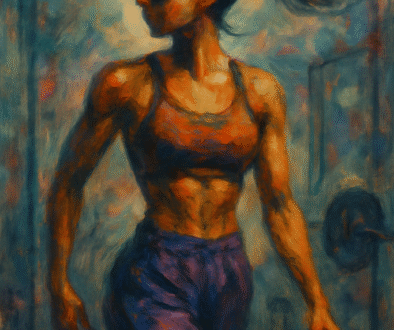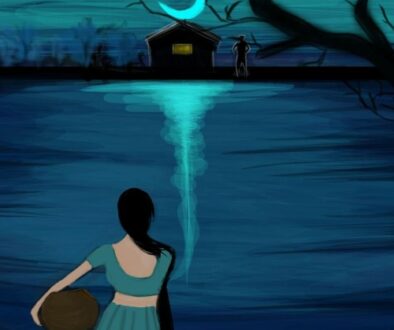Boredom’s Allure Amidst Modern Chaos

In a world teeming with distractions where the internet unlocks an extraordinary wealth of educational resources that transcend ancient dreams, it emerges as a powerful tool, adept at ensnaring our minds and seizing control of our attention. We consume so much information that the only time we think at peace is in the bathroom while we bathe, the only time when boredom doesn’t irk us to get hold of our mobile phone. It’s when we ponder upon inane ideas that otherwise wouldn’t occur. Our generation has been lucky to see the advent of technology raise the bar for productivity, and stupidity too. Since the time power cuts were used as an excuse to tell stories or dreams and let our imagination run wild, to the present time where a power cut wouldn’t matter in our inverter resourceful homes and gadgets that keep us occupied, we have witnessed a shift in the way we engage our creative minds.
When do we think at peace? When do we enjoy our boredom?
As we navigate our daily lives, we observe people go about their routine, mundane lives — the tired man returning home from an eight hour workday, a group of friends immersed in laughter, a lady lost in music streaming through her earphones, a curious kid peeping through the window, asking the moon if it hurts when the electric wires cut through him, the eyes of an old man reflecting the untold realities of this cruel world, a couple clasping hands, yearning for the night to stretch indefinitely.
This voyeuristic view makes us feel detached, yet empathetic of the realities we share. In that moment, there is a voice that tells us, we’ve been there. Exhuming moments from the nostalgia shop that we possess somewhere deep within us. The sense of familiarity is magical, as if we’ve transcended time. That’s the beauty of quiet, undisturbed contemplation.
Aren’t we all fascinated by this idea of voyeurism?
The naughty excitement of seeing someone naked without their knowledge, having access to someone’s private life through window, the perverse thrill of invading personal space without permission, glimpsing someone’s vulnerability without their knowledge.
Within this realm of contemplation, my thoughts drift to one of my favorite paintings–“The Nighthawks” by Edward Hopper. Hopper is an artist who spent years trying to blend loneliness, solitude, alienation and boredom. The painting is a masterpiece demanding all our attention to notice all it’s subtleties. It’s strong diagonal lines drawing us into the silent, center-stage-like yet, warmly lit diner. It’s said be set in Greenwich, America where three people, lost in their thoughts, have congregated in an all-night diner. The relationship between the two people sitting close to each other is ambiguous — are they strangers or a couple caught in a moment of severance? The diner is placed where two streets meet, giving a view of the diner and adjacent street. The diagonal lines, detail to lighting, perspective and mood is to die for. We look at the painting as if we are passing by the street, witnessing people bathed in the warm light of the diner, sitting close to each other yet distanced by their thoughts and apathy. The painting amplifies the silence and contrasts the frightening darkness of the surroundings and the bright, warm light of the diner. Created during the period of war, its unclear whether the darkness symbolizes the fear of being bombed or simply reflects themes of alienation and boredom that pervade the artwork.
It’s (the lack of communication between the people in his paintings, ed.) probably a reflection of my own, if I may say, loneliness. I don’t know. It could be the whole human condition.
Edward Hopper
“The Nighthawks”, and most of Hopper’s work serves as a visual representation of the very essence we seek to understand–the importance of boredom, solitude, and quiet contemplation. It reminds us of the value inherent in those stolen moments of introspection, where we detach ourselves from the constant distractions of the world and allow our minds to wander freely.
While technology and entertainment undoubtedly offer valuable experiences and opportunities, it is crucial to strike a balance that allows boredom, solitude, and quiet contemplation to breath. When technology’s primary purpose becomes entertainment, the concept of boredom tends to lose its significance. The constant allure of entertainment provided by technology can overshadow the moments of quiet contemplation that once allowed us to explore our own thoughts and ideas. The incessant quest for entertainment has consequences that extend beyond the immediate gratification provided by technology. The space for creative exploration and originality may diminish. The constant availability of prepackaged entertainment may discourage people from engaging in imaginative pursuits and discovering their passion. The uninterrupted stream of constant entertainment hinders productivity and can easily lead to procrastination and lack of focus.
Instead of channeling boredom into productive endeavors such as self-reflection, deep-thinking, skill development, we may succumb to the allure of mindless entertainment, resulting in a decreased capacity for achieving meaningful goals. Boredom serves as a catalyst for introspection, self-discovery, innovation, and problem-solving. Boredom draws us into appreciating the subtleties of life in a spiritual manner that external stimuli cannot offer. In the silence of the diner, the individuals find solace, and their solitude becomes a catalyst for profound self-reflection. By losing touch with our own thoughts and emotions, we risk settling for a superficial and shallower understanding of ourselves and our surroundings, and robs us of our capacity for personal growth and fulfillment.
Let us break free from this vicious cycle. For a change, let us put our phones down, uninstall time consuming apps that make us “consume” more than we “create”, and just take a stroll in the park, stare at empty roads, embrace periods of stillness and engage with our own thoughts that will eventually lead us into cultivating a deeper connection with ourselves.
Let us reclaim the value of boredom, for it is in those quiet moments that our creativity blossoms, our productivity soars, and our souls find solace amidst the chaos of the modern world.
Trivia
- The painting got it’s name from Hopper’s wife Jo, who was also an artist. The man sitting next to the woman in the diner had a beak-like nose.
- The man’s cup of coffee is cold whereas the woman’s is steaming. Could this mean that he was waiting for her?
- The movie Pennies From Heaven (1981) recreated the Nighthawks.
- The Art Institute of Chicago is the home of the original painting.
If you like the Nighthawks, I suggest exploring more of Hopper’s work. I also enjoyed nerdwriter1’s video about the same subject. Watch it now!!



